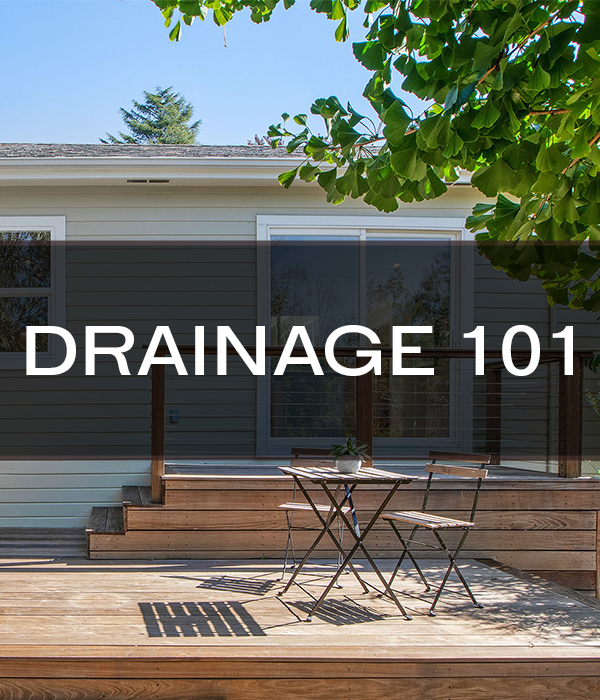
With the historic rainfall we have had over the past few weeks, we wanted to pass along this timely information from Paul Barraza at JMC Inspections in Berkeley. Below you will find several steps you can take to ensure your home is protected against water damage.
Written by : JMC Inspections
Keeping water out of your home is one of the most important ways to prevent damage to your structure and belongings. However, that's easier said than done, especially for buildings in older neighborhoods, where proper site grading was not a priority decades ago. So here are the steps, in order of priority, to address site drainage on your property.
Step 1: Roof Water
While roofs keep the sun and rain out of a building, they are essentially giant water collectors. A roof area of just 20 feet x 30 feet can collect more than a hot tub full of water (~300 gallons) for each inch of rainfall. Therefore, directing roof water away from your building is critically important. Downspouts terminating next to the foundation will saturate the soil and foundation, leading to water entry. The solution is to have each downspout connect to rigid drainage piping, installed below grade, which drains by gravity away from the building. Shortcuts like running the piping on the ground and flexible drainage piping materials are not ideal as both installations are easily damaged.
If you've taken care of your roof water, head to Step 2.
Step 2: Surface Drainage
Do you have driveways, walkways, or patios that slope toward your building? If your answer is yes, such surfaces can direct water towards your foundation and below your building. In some cases, you can rebuild a walkway to drain water away, but it can be costly to rebuild a patio or driveway. In these situations, channel drains are often used to intercept water and direct it away from the building, once again using below grade, rigid drain piping to drain the storm water, by gravity, away from the building.
If you've taken care of both roof water and surface drainage, head to Step 3.
Step 3: Subsurface Drainage
Even with perfect roof water and surface drainage, you can still get subsurface water entering your building through your foundation, as concrete is porous and will let water pass (or wick) through. This is often the case for hillside homes or homes with basements. The best (and most expensive) solution is to capture the water before it gets to your foundation by using a perimeter trench (French) drain around your entire building. A French drain is essentially a gravel filled trench with a perforated pipe that will collect water and direct it away from the building by gravity. To keep your foundation dry, the perforated pipe will need to be at or below the bottom of your foundation, so in many cases, this can require a lot of digging and this manual labor is the main reason French drains can be expensive. That said, a properly designed and built French drain is your best strategy to keep water away from your foundation and basement / crawl space.
Sump Pumps
As you may have noticed, each of these steps is best accomplished by draining water by gravity. However, some building sites (especially in older neighborhoods) don't have enough slope to drain water away by gravity, in which case sump pumps will have to be used. A sump pump is a submersible pump that will automatically pump water out of a sump basin when the water gets high enough to trip the float switch. While these pumps can solve many drainage problems, they are mechanical equipment that need frequent maintenance, and won't work when the power goes out. In the Bay Area, most power outages occurs during big rain storms, so this is a significant drawback.
There are battery-powered backup pumps available, but the batteries don't last long. Water-powered backup sump pumps use water pressure for power, but can be more involved to install, but since they don't require electricity, are a reliable backup solution. Another option is to have a whole home battery backup or a backup generator, but unless you need to backup other critical electrical loads, such backup systems can be expensive.
This is a basic overview, and the design and strategies used will depend on the constraints of the site. If you are having drainage issues, it best to consult with several licensed drainage contractor to get options, advice, and cost estimates.
Thanks to Paul Barraza at JMC Inspections in Berkeley for this guest blog post!
« Back to Blog Posts

